In China, polo was very popular in the Tang and Song Dynasties, mainly popular among the army, nobles and royals. Then it faded away during the Qing Dynasty.
This is recorded in several frescos, as the set of frescos depicting the sport, found in the tomb of Li Xian the prince of Tang Zhanghuai, the Qian County and Shaanxi Province. It fully demonstrated scenes of the polo movement and style during the Tang Dynasty era.

These mural paintings have many characters and vivid images. More than 20 players were involved in the matches, all of them wore narrow-sleeved gowns, and “six pieces boots”, ball cap - putous, all holding a crescent-shaped bat and riding their horses to compete. Different postures of ball hitting, that give the observer a strong sense of rhythm and movement.
An archaeological excavation done in this area in a period of time, unveiled artifacts that include terra-cotta polo statues, a bronze mirror depicting the activities of the polo sport, and the ancient polo stadium that also contained a “light temple”.
The engraved stone found at the polo field confirmed just how much the polo sport was a grand occasion for the time. It can be said that this was the most popular and "fashionable sport" during the Tang Dynasty. Polo was also seen as being good for the participants' physical, mental health, and athletic skills.
The Tang Dynasty women also participated in the polo sport. As a way of leisure and entertainment, Guo Yingyi, the Jiannan Military Governor, and King of the County of Dingxiang, once said to be: “teaching the girls to ride donkeys and to hit the ball”.
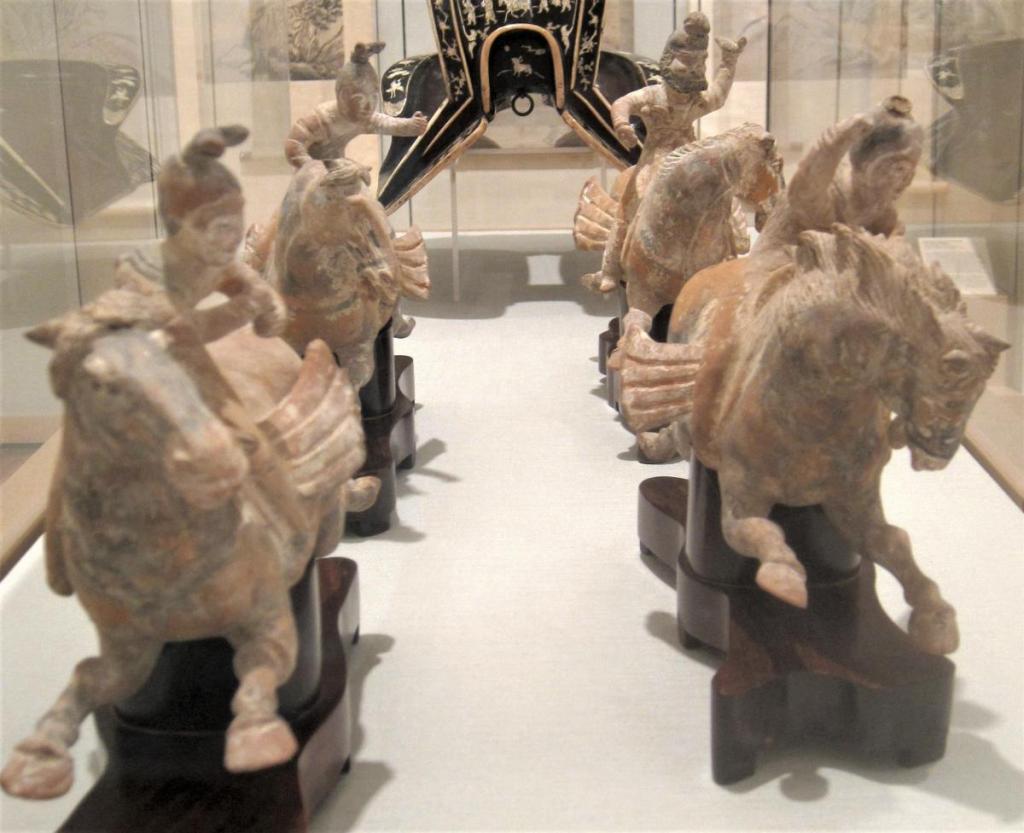
Guo Yingyi asked women that wanted to take part in the polo sport to ride donkeys instead of horses, turning women’s polo into a much funnier game.
According to the written findings, the emperors of the Tang Dynasty such as Zhongzong, Xuanzong, Muzong, Jingzong, Xuanzong, Xizong, and Zhaozong were all supporters and participants themselves in the polo sport. In the Sixth Year of the Tianbao era (747), Emperor Tang Xuanzong issued a special order, and declared that Polo would become one of the subjects for military training.
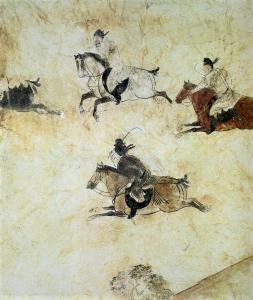
The famous Hanyuan Temple Stadium during the Tang Dynasty was the most famous polo field in all of ancient China. The ground was a mixture of sifted soil and an appropriate amount of butter, it was then repeatedly beaten and crushed to make it perfect and stylish, as: “it is like a wet stone when seen from above, and like a mirror when admired from the ground”.
Polo was truly unique among all of the other colorful ancient Chinese sports.
Ancient Chinese polo was not played out extensively throughout the country, but it was often used as an important means to establish international diplomatic relations.
From the ruins of the Silk Road today, it is further confirmed that the influence of ancient Chinese polo not only affected East Asia, South Asia and West Asia, but also directly affected the development of the modern polo we know today.
According to the literature, the neighboring Bohai, Korea, Japan and other countries have described their polo in comparison with the Tang Dynasty.
The painting of Bianqiao Huimeng (Drawn by Chen Jizhi during the Liao Dynasty) inside the Palace Museum, is a scene depicting the polo match between Chinese Tang and Turks.
In the records of the Tang Dynasty, Roman and Iranian businessmen had polo entertainment during the time of the Tang Dynasty, there was a friendly match between Emperor Xuanzong and Tubo, where the Tang Dynasty team won a full victory with 4 people against 10 from the Tubo side.
The time of the Tang Dynasty was where we can see the full strength and importance of polo. Until the Song, Liao and Jin dynasties, the imperial court also regarded polo as one of the sole "military rituals", creating around the sport detailed rituals and precise rules to follow.
It is worth mentioning that during the Tang Dynasty, the level of polo in Chengdu had been one of the highest.
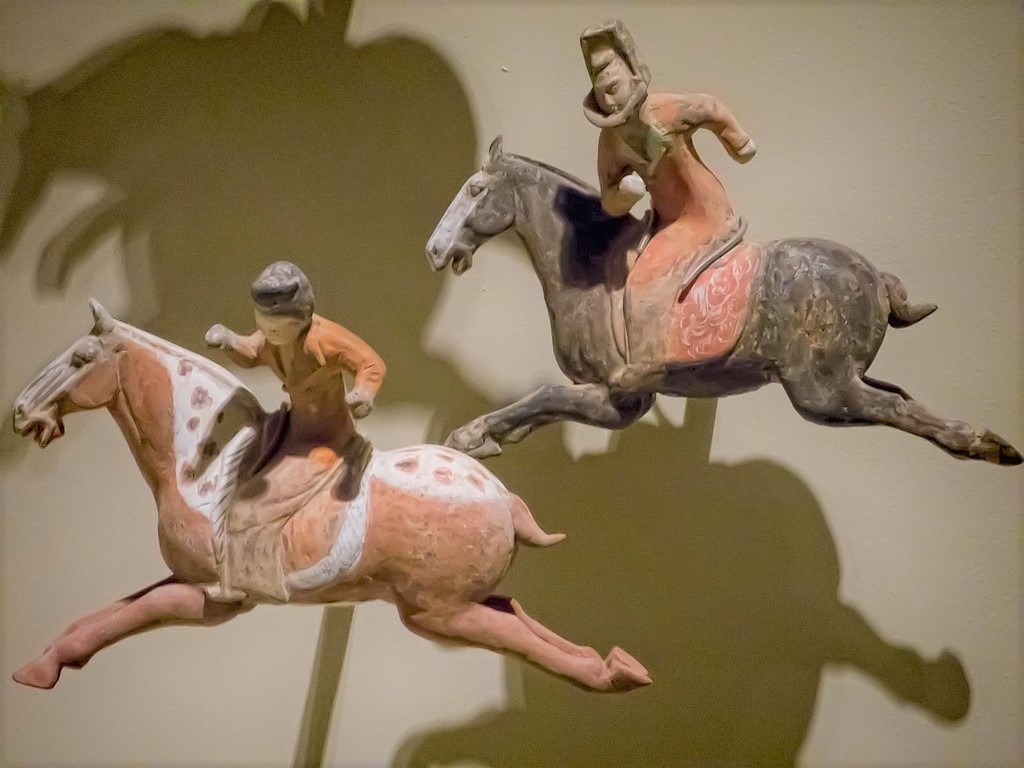
Chengdu and polo
During the Tang Dynasty, Chengdu was a rich and stable city. The former King of Shu Wang Jian loved polo and after claiming control of Chengdu and becoming its ruler, he rebuilt the polo field which for many years after was well known as one of the most luxurious.
Chengdu's polo field was particularly elegant, the stadium was flat as a mirror and the side walls of the polo field were replaces by the Lord with a layer of satin, which was especially gorgeous.
Shu Taotu records that Wang Jian after becoming the emperor, made his next step by renovating the palace of the former Wangfutang, as documents recall:
“the hall is Huitong Temple; the polo field gate is Shenwu Gate, the polo field hall is Shenwu Temple, and Shu King Temple is Chenqian Temple”.
It can be seen that the location of the polo field is adjacent to the Huitong Temple and Shu King Temple. Zhang Yong of the Song Dynasty said: “the east of the Temple of Shu Palace is the grand polo field”. And this is still more or less the location of the current sports center of the city that we can see today, once a real treasure trove for sports.
Expert Shuai Peiye believes that during the Tang Dynasty and the subsequent Five Dynasties and Ten Kingdoms, the polo sport in the city of Chengdu was very popular and of high level. "At that time, Guo Yingyi, the Jiannan Military Governor, Guo Yingyi once organized a women's polo team.
Instead, Meng Zhixiang the Taiyuan Military Governor, went eastward into Chengdu and saw many people enter the “huzi” (goal post) with one stroke of the bat, called ‘aggressive entering '...".
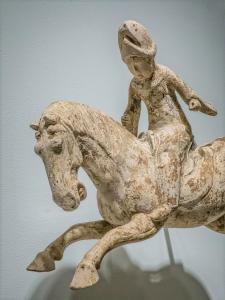
Shuai Peiye explains to us that: "The ‘huzi’ is a hole. The aggressive entering is hole in one bat. This came from a sport that was popular at the time in Chengdu, and was called 'Chui Wan', the predecessor to golf, and “Bu Da” (predecessor of modern hockey)
They all developed from the polo sport, which shows that the level of polo and the attention given to it in Chengdu and allover China at that time was already very high".
All this seems to be the foreshadowing the coming and creation of Chengdu's distinguished polo apparel. But we will know more about it in our next story.





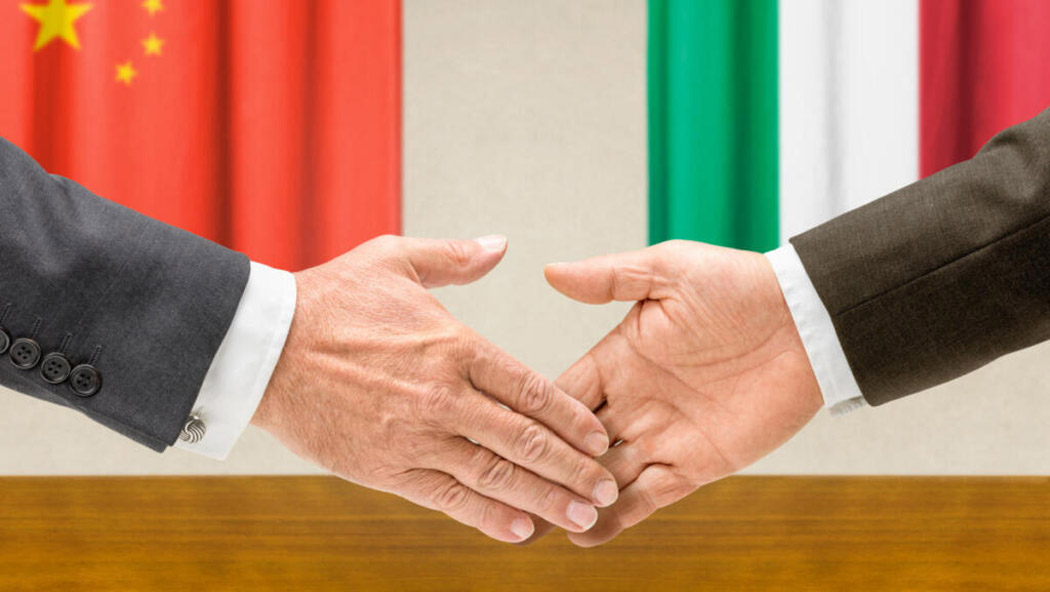


Follow us